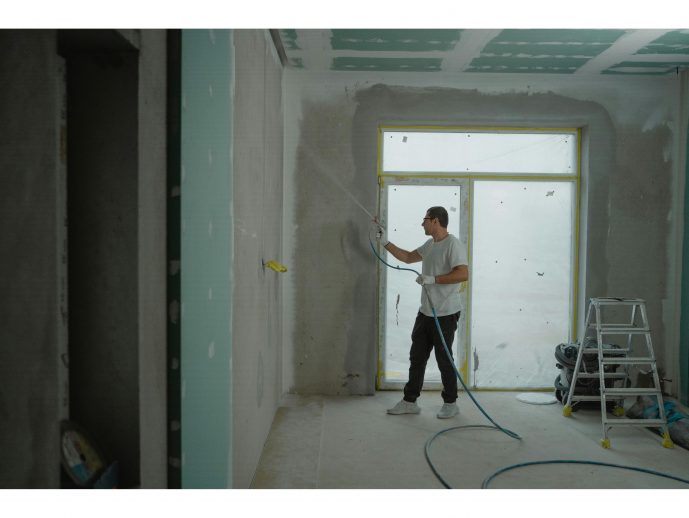Categories more
- Adventures (17)
- Arts / Collectables (15)
- Automotive (37)
- Aviation (11)
- Bath, Body, & Health (77)
- Children (6)
- Cigars / Spirits (32)
- Cuisine (16)
- Design/Architecture (22)
- Electronics (13)
- Entertainment (4)
- Event Planning (5)
- Fashion (46)
- Finance (9)
- Gifts / Misc (6)
- Home Decor (45)
- Jewelry (41)
- Pets (3)
- Philanthropy (1)
- Real Estate (16)
- Services (23)
- Sports / Golf (14)
- Vacation / Travel (60)
- Watches / Pens (15)
- Wines / Vines (24)
- Yachting / Boating (17)
The Essential Guide to Planning a Whole Home Remodel
Published
10/07/2025Planning a home remodel can feel overwhelming, but having a clear roadmap makes the process more manageable and rewarding. From updating outdated layouts to enhancing functionality, a well-planned remodel transforms your living space to suit your lifestyle better. Careful consideration of design, budget, and timelines is essential to avoid common pitfalls and ensure a smooth renovation journey.
For homeowners interested in luxury home renovations, thoughtful upgrades can elevate comfort and aesthetic appeal. Incorporating high-end finishes, custom features, and cohesive design elements allows each room to reflect a refined style while maintaining practicality. This guide will help you navigate the planning stages, offering strategies to prioritize improvements and make informed decisions that create a home you’ll enjoy for years.
Define Your Remodeling Goals
Before starting renovation, define your goals clearly. Consider what you want to achieve in functionality, aesthetics, and lifestyle. Are you creating more open spaces, updating kitchens and baths, or improving energy efficiency? These objectives guide decisions and prevent costly changes. Working with a professional whole home remodeling company can aid planning. They can turn ideas into designs, suggest suitable materials, and advise on timelines and budgets. This ensures your project stays focused, realistic, and suited to your lifestyle.
Establish a Realistic Budget
A transparent budgeting process is the cornerstone of any successful whole-home remodel. Tally all potential expenses, from design fees and labor to materials, permits, and finishing touches. Experts recommend including a contingency fund—typically an extra 10-15%—to cover unforeseen challenges that inevitably arise during construction. This proactive step helps to keep your finances intact and your project on track.
Develop a Detailed Timeline
Mapping out a realistic schedule is essential for minimizing disruptions and ensuring a smooth workflow. Break the project down into key phases: initial design, demolition, structural changes, installations, and final inspections. Factor in time for ordering materials, securing permits, and weather-related delays. Maintaining flexibility in your timeline allows you to adapt if unexpected circumstances arise, reducing stress for both you and your contractors.
Secure Necessary Permits
Many homeowners underestimate the importance of permits in a large-scale remodel. Before you begin work, research the permits required by your local jurisdiction. These cover everything from electrical and plumbing upgrades to structural changes and additions. Failing to obtain proper authorization can result in costly fines or delays. Involving professionals familiar with local regulations streamlines this process and protects your investment.
Assemble a Qualified Team
The success of your remodel depends on a reliable team. Vet architects, designers, and contractors by checking credentials, reviews, and recent work. Experience in whole-home remodels and knowledge of local style and codes are essential. Clear contracts and a shared vision build trust and communication.
Prepare Your Home and Family
Remodeling introduces temporary disruptions, so proactive preparation is essential. Set up alternate living spaces, create routines for children and pets, and discuss logistics with your contractor—such as access points and work schedules. Establishing expectations and safety measures early will help maintain normalcy and reduce stress during construction.
Focus on Energy Efficiency
Your remodel is a great chance to boost your home’s energy performance by upgrading insulation, windows, HVAC, and adding smart technology and Energy Star appliances. These changes lower utility bills, increase comfort and value, and protect the environment.
Maintain Open Communication
Effective communication with your remodeling team is vital for avoiding misunderstandings and addressing concerns promptly. Schedule regular check-ins, keep a record of decisions, and address questions as they come up. Transparency and collaboration are critical, ensuring that small issues are managed before they become major obstacles.
Conclusion
Planning a home remodel requires informed decisions, detailed planning, and a commitment to quality. Clarify goals, manage your budget, and collaborate with experienced professionals to transform your space into something extraordinary. With the right team and preparation, your dream home is within reach, and the rewards will last for years.















